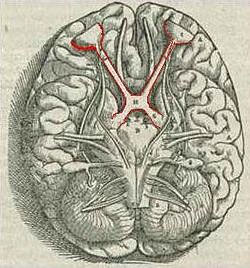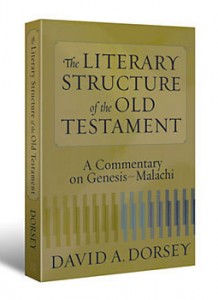Jul
9
2009
This passage is arranged symmetrically (chiasmus) but is also progressive, following the pattern of the Feasts (which also follow the pattern of Genesis to Judges).
Sabbath/Genesis – Paul’s word of greeting (Grace and peace)
……….Passover/Exodus – Divisions in the church
………………..Firstfruits/Leviticus – Wisdom of Christ
…………………………Pentecost/Numbers – Crucifixion of Christ
………………..Trumpets/Deuteronomy – Mind of Christ
……….Atonement/Joshua – Divisions in the church
Tabernacles/Judges – The Day will declare (judge) it (Church as Sabbath-Temple)
Kelby asked if these patterns are simply the work of the Holy Spirit, or if the authors of the Bible were consciously composing their writings in this manner. Good question. I think the answer is both. Bible books sometimes arrange events out of chronological order to fit this pattern. But then, Bible history also follows this pattern at various levels. The authorship of Scripture is like the humanity and divinity of Christ: inseparable.
Comments Off | tags: Chiasm, Feasts, Paul, Typology | posted in Biblical Theology
Jun
27
2009
or Silencing the Higher Critics

Yet more on literary analysis of the Bible as a ‘terrible marvel‘; a review of two books. As Warren Gage has commented, we are on the verge of a tremendously creative time in Biblical theology. But this to me seems also to be an element of scholarship returning home, older and wiser, from a wilderness of unbelief.
Genesis: The Story We Haven’t Heard
by Paul Borgman. Downers Grove, IL: Intervarsity Press, 2001. 252 pages.
The Literary Structure of the Old Testament: A Commentary on Genesis-Malachi
by David A. Dorsey. Grand Rapids, MI: Baker Books, 1999. 330 pages.
Reviewed by Timothy Paul Erdel, Ph.D., Archivist and Assistant Professor of Religion and Philosophy, Bethel College, Mishawaka, IN.
“I have been fascinated by the primal power of Old Testament stories for as long as I can remember. From my perspective, there is no clearer window on human character, no greater storehouse of hard and holy truths. Yet some tales are deeply disturbing. Phyllis Trible calls them ‘texts of terror.’ Even the most familiar passages may seem strangely distant. So I relish each time a preacher or teacher sheds new light on these ancient Hebrew narratives.
Continue reading
Comments Off | tags: Abraham, Babel, C. S. Lewis, Chiasm, Compromise, David A. Dorsey, Higher Criticism, Isaiah, Jeremiah, Literary Structure, Warren Gage | posted in Biblical Theology, Quotes
Jun
16
2009

This is the intro to one JBA’s Amazon booklist. Too good a quote to pass up:
“In recent years postliberal theology and certain strands of Reformed thought have seen typology and chiasm as an essential method of biblical study.
While some forms of postmodernity are helpful to the church, most are not as avant garde as they pretend.
Ironically, liberals and most conservatives have the same method of bible study: you the individual must learn as many facts about the text as possible, importing back into the text foreign paradigms (or more accurately, bad foreign paradigms).
Typology, however, provides a subtle but deadly maneuver against modernity: it challenges modernity’s use of reason and forces it to think in terms of story and symbol, which by definition it can’t do.”
Yes, conservatives, he means you.
(Pic: the optic chiasma)
Comments Off | tags: Chiasm, Modernism, Typology | posted in Biblical Theology, Quotes
May
3
2009
I just noticed that the passage concerning the slain Lamb (Rev. 5) and the passage concerning the victory of the church (in 9-11) correspond chiastically.
The first is the Adam conquering Herod’s Egypt and moving out through a bloody door (Passover/Circumcision)
SCROLL: Word – Most Holy Place – Garden
……LAMB: Sacrament – Holy Place – Land
…………NATIONS: Government – Courts – World
These cover the three territories corrupted by Adam, Cain and the ‘sons of God’. Between this ‘first generation’ (head) and the ‘next generation’ (body), there is a battle in the first century ‘wilderness’.
………………WILDERNESS BATTLE: Gospel as Pentecost Law
Later, there is the redeemed Eve conquering Herod’s Jericho and crossing the river into a heavenly country over the corpse (Atonement/Baptism)
…………SUNRISE ARMY of 200 million Jew/Gentile saints:
…………Government – Courts - World
……CHRIST the true brother/High Priest with the little scroll:
……Sacrament – Holy Place - Land (and Sea)
TWO WITNESSES, saints as the Ark cherubim: Word – Most Holy Place - Garden
Not only does this pattern follow the seven feasts of Leviticus 23 (if we include the central wilderness), each of these seven points contains the same sevenfold structure within itself. It is like Zechariah’s Lampstand with 49 lights. And this is just another overlay on the already manifold structures in Revelation. There really is no bottom to this book.
Comments Off | tags: Atonement, Baptism, Cain, Chiasm, Circumcision, Herod, Literary Structure, Passover, Revelation, Zechariah | posted in Biblical Theology, The Last Days
Apr
15
2009
Passover versus Atonement = Circumcision versus Baptism
With that background, the entire Bible follows this pattern:
Sabbath - Creation to Abraham
000Passover - Circumcision divides humanity in two
>000000Firstfruits - Under Moses, a priesthood ascends before God,
>000000and draws near over blood sacrifices
000000000Pentecost - In the biblical pattern, this central point is always
000000000testing in the wilderness. This is the life of Christ,
000000000who is tested in the way all men are, but who does not sin
000000Trumpets - Christ assembles the New Covenant church,
000000making out of Jew and Gentile one new man in the first century
000Atonement - A corrupted Judaism is destroyed as Jericho, vindicating
000the words of Christ. This is the first conquest of the age
000in which we now live
Booths - the final coming of Christ and the judgment, after which the saints live with Him in glory
Now, to get to the point…
Continue reading
2 comments | tags: Acts, Baptism, Chiasm, Feasts, Jericho | posted in Biblical Theology
Apr
15
2009
 “I began writing this book some ten years ago, although my interest in Hebrew literary structure goes back a decade before that. My fascination with the subject was kindled when I began teaching Old Testament courses in seminary. At that time I was struck by the apparent lack of order within many of the biblical books. Jeremiah seemed hopelessly confused in its organisation; so did Isaiah and Hosea and most of the prophets. Song of Songs and Ecclesiastes appeared to be in almost complete disarray, and even the more orderly historical books, such as Joshua and Kings, showed signs of strangely careless organisation. Why did the biblical authors write like this? I would never write a book, an article, or even a private letter with such carelessness of arrangement.
“I began writing this book some ten years ago, although my interest in Hebrew literary structure goes back a decade before that. My fascination with the subject was kindled when I began teaching Old Testament courses in seminary. At that time I was struck by the apparent lack of order within many of the biblical books. Jeremiah seemed hopelessly confused in its organisation; so did Isaiah and Hosea and most of the prophets. Song of Songs and Ecclesiastes appeared to be in almost complete disarray, and even the more orderly historical books, such as Joshua and Kings, showed signs of strangely careless organisation. Why did the biblical authors write like this? I would never write a book, an article, or even a private letter with such carelessness of arrangement.
I was intrigued by the possibility that the Hebrew authors might have organised their compositions according to literary conventions that were different from ours. I began to discover, over a period of years, that several structuring patterns rarely used by us were remarkably common in the books of the Hebrew Bible, particularly chiasmus (symmetry), parallelism, and sevenfold patterns. I was increasingly struck by how often these patterns had been utilised to arrange biblical books…
It was my mother who gave me a love for literature. She read to my brother Stephen and me regularly, from as early as I can remember. I still have many fond memories of those wondrous bedtime stories, whose structures — like the Bible — were designed for the ear, not the eye.”
David A. Dorsey, The Literary Structure of the Old Testament, p.9-10 (Preface).
Comments Off | tags: Chiasm, David A. Dorsey, Ecclesiastes, Hebrew, Isaiah, Jeremiah, Literary Structure, Old Testament, Song of Songs | posted in Quotes




























